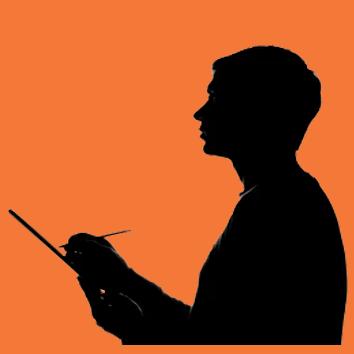I have never been so naïve to believe that I can do anything that I want.

In fact, I have never even believed that I can do anything that I set my mind to.
Were either of these things true, I wouldn’t be half as stressed by schoolwork, wouldn’t cripplingly suffer from impostor’s syndrome any time I attempt to complete said work, wouldn’t scrap the work within two minutes because it isn’t flawless on the first attempt, and I wouldn’t be unsuccessful in any of my endeavours rather than just a few of them.
Hence, when I am told to write about what I want to do in ‘the future’, I am impossibly lost. Frankly, I have forever believed that such a concept as ‘the future’ is too distant and too obscure to be important to the present.
What I was naïve to believe is that the future stays distant; it does not. Let’s just say, that awakening was rude.
From an early age I have been in touch with creativity: reading, drawing, writing, imagining. I once utilised them as an escape.
As I aged, however, I subconsciously recalibrated those loves to recognise the beauty of the ‘How’.
How is that book so emotionally impactful?
How is that artwork created to convey tone and message?
How is this prose connoting broader messages?
How does art, in any form, inevitably reflect concepts of the world around us?
I like that I ask questions. It makes me an analytical person and somebody who likes to investigate with a fine-tooth comb, whether it be art or media or ideas or people or societies.
But upon realising that my ‘future’ is rapidly approaching, I am facing it in search for how my analysis will help me. Or, more appropriately, how it can help me.
When I began to ask ‘how’, I said that I wanted to work within ‘Art’. There was a period when I wanted to draw, there was a period when I wanted to graphic designer. But I reminded myself that I cannot do everything.
Some things are for specific people; I could call myself an artist all I wanted and I could watch as many YouTube tutorials as I possibly could, but never could I ever learn how to draw hands. I realised that within the visual art spectrum, I neither had the spark nor the skill to get it perfectly accurate or perfectly inaccurate. My pieces always looked like an attempt at one or the other.
So I turned to my other crutches – reading and writing – and it is there, in that corner of ‘Art’, that I began to think I could find myself. I can see myself in this elusive world known as ‘The Publishing Industry’ not only because I can see the possibilities of my analysis, but because I can see the possibilities of my contribution to art that begs to be analysed, investigated and appreciated for its facets.
Ultimately, I don’t know where I want to end up within such a gargantuan industry – writer or editor or designer (probably not that one) or agent or marketer or something in between at a publishing house or magazine company or news corporation – but I know that I want to be able to implement nuance in our written language, which ever so needs it.
Harrison Abbott
Busybird Work Experience Student
